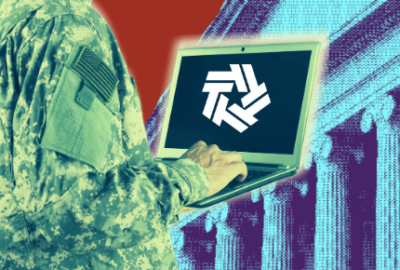After underreporting billions, VA will launch new initiative to review EHR’s costs
The process of producing a new, independent cost estimate for the electronic health record modernization project will begin later this month, the Department of...
Members of Congress looking for a quick and easy assessment of just how much the Department of Veterans Affairs will spend on its massive electronic health record modernization effort will be disappointed.
VA will begin an independent cost estimate of its electronic health record modernization initiative, an effort that’s supposed to include the IT and physical infrastructure upgrades needed to support the project, later this month.
That process will take a year, Paul Brubaker, VA’s acting principal deputy assistant secretary for the Office of Information and Technology, told members of the House Veterans Affairs Technology Modernization Subcommittee Thursday.
The department has contracted with the Institute of Defense Analyses to help VA better capture the EHR’s actual costs, Brubaker added.
“I find it concerning that three years into a $16 billion program VA is unable to account for actual expenses related to the project,” Rep. Frank Mrvan (D-Ind.), chairman of the technology modernization subcommittee, said.
Mrvan, along with a few of his Republican colleagues on the subcommittee, have introduced the VA Electronic Heath Record Transparency Act in an attempt to shed more light on the project’s lifecycle costs.
The bill is a reaction to the two reports VA’s inspector general released earlier this year, which found the department had previously underreported the costs of making physical and IT infrastructure upgrades needed to support the EHR by as much as $5 billion.
The legislation requires VA to report regularly on its EHR expenses until the entire project is complete. Those expenses must include the direct and indirect costs of implementing the electronic record, whether they come from the Veterans Health Administration or IT accounts.
“The time has come to do that,” Matt Rosendale (R-Mont.), ranking member of the House VA Technology Modernization Subcommittee, said at Thursday’s legislative hearing. “We’re already monitoring the program’s obligations, but once VA places funding on the Cerner contract and other contracts, it goes into a black box.”
VA said it supports the overall intent of the bill but sees some logistical problems with implementing it, in part, because the work to produce a new independent cost estimate for the EHR will take a year, and the legislation calls on the department to begin producing new data within 90 days of the bill’s passage.
Brubaker said the IG reports, plus the findings of VA’s EHR strategic review, highlighted some changes it needed to make in accounting for the project’s true costs.
“We will report and forward to the committee the data that we receive as a result of the independent cost estimate, which should offer much higher fidelity analysis than we had previously performed,” he said. “We listened to the IG report and took it to heart and realized that we needed to look at the end-to-end costs of this particular program and provide all of our stakeholders with data — and even the management of the department — with the data necessary to really understand the overall costs of the program.”
The department, however, still must decide how exactly how it will attribute the costs of making certain infrastructure upgrades, which are necessary to support the new EHR but were probably needed well before VA choose to adopt a commercial platform.
“We’ve begun asking the question: But for EHRM, would we have to upgrade elements of the infrastructure? It’s clear that there will be a lot of additional benefits that will be derived from upgrading the infrastructure and having EHRM pay for elements of that,” Brubaker said. “But we have to make sure we have a very defensible cost attribution model, and [the Institute of Defense Analyses] is charged with coming up with that.”
At the same time, Congress is also trying to get a better handle on the rest of VA’s lengthy IT to-do-list. VA’s four largest projects cost at least $27 billion, Rosendale said.
“As for the smaller projects, the budget doesn’t contain a complete list, and the VA has never provided one,” he said. “That means we can’t even say for sure how many projects exist.”
Rosendale and Mrvan have introduced the VA IT Reform Act, which requires the department report to Congress on technology projects whose expenses exceed a certain monetary threshold.
It also prohibits VA from starting major IT projects until it submits a report to Congress detailing the costs, schedule and performance of each initiative, as well as an estimate of the total acquisition, implementation and lifecycle costs, an anticipated implementation schedule with specific milestones and key business and performance objectives.
A bipartisan group of senators, which include the top Democrat and Republican on the Veterans Affairs Committee, introduced similar legislation earlier this year.
VA again said it supports the general concept of the legislation but has concerns with the details. It encouraged Congress to adopt language the Office of Management and Budget currently uses to define a “major IT program.”
The department also said it’s taken steps within the last year to better manage its many ongoing IT projects.
VA’s IT Investment Board, chaired by the chief financial, acquisition and information officers, is supposed to review each IT project at least once each year. The board recently adopted new criteria, which require VA more comprehensively review major IT investments, worth more than $1 billion over its lifecycle or $200 million each year, Brubaker said.
Copyright © 2025 Federal News Network. All rights reserved. This website is not intended for users located within the European Economic Area.
Nicole Ogrysko is a reporter for Federal News Network focusing on the federal workforce and federal pay and benefits.
Follow @nogryskoWFED







